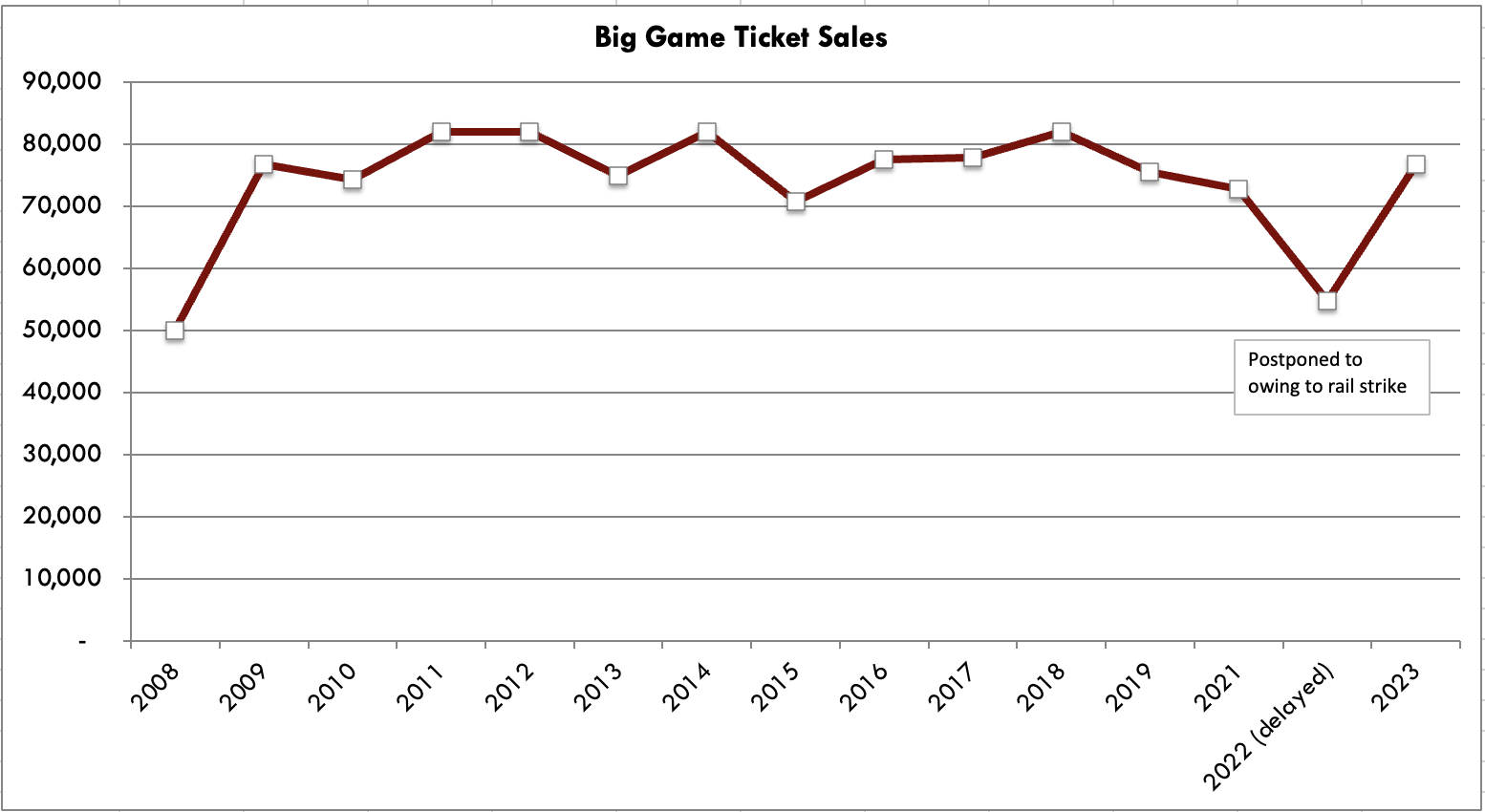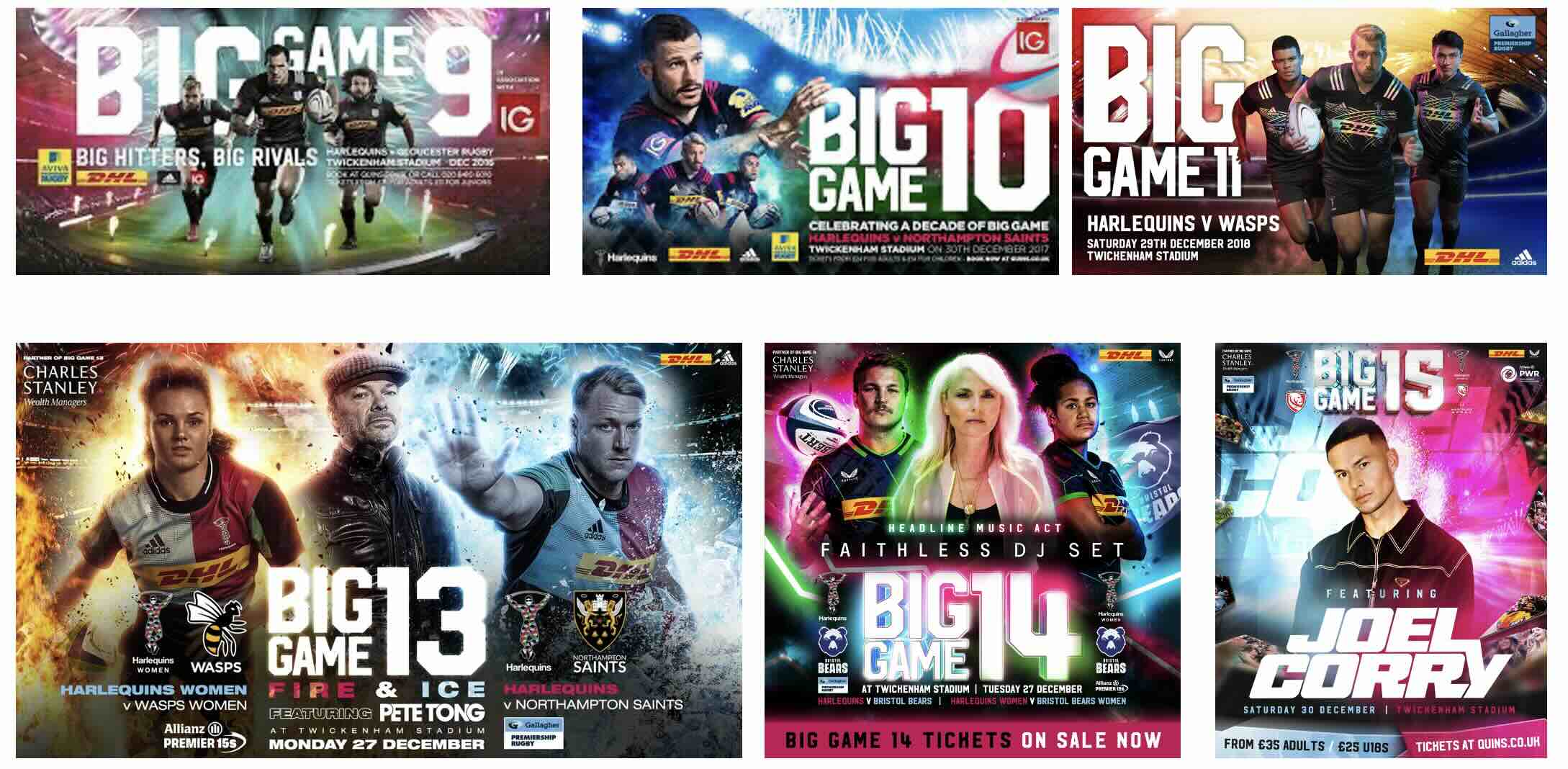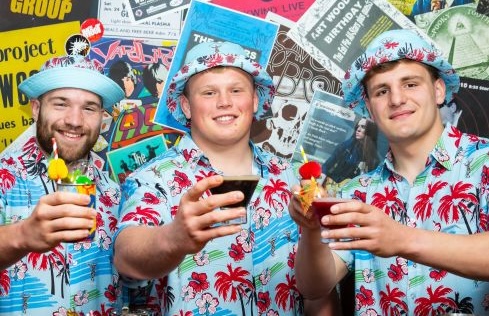Creating Big Brand Assets: Harlequins
Inspiration on using distinctive brand assets to build awareness and trial came from an unusual source last weekend, during a trip to Twickenham rugby stadium. I enjoyed watching the rugby team I support, Harlequins, win the third annual edition of the Big Summer Kick Off against Northampton 41-32. This event involved the club taking a regular season game from their home stadium to the much bigger national stadium. In addition the game itself, Harlequins put on a range of entertainment including headline act Jess Glynne. The event attracted 60,000 spectators, four times the attendance of a regular home game.
This drives awareness and trial for the Harlequins brand with new customers including a younger audience, with 35% of ticket buyers under 30 years (much younger than a typical game I expect). It boosts exposure for Harlequins’ sponsors, enhancing the brand’s business to business proposition. And it creates valuable extra revenue for the club. This summer event builds on the longer established Big Game, which has taken place during the Christmas period for the last 16 years, attracting an even bigger audience of 80,000.
In this post we look at the learning from how Harlequins have created, amplified and then extended a distinctive brand asset.
1. Create a distinctive, replicable brand asset
Rather than just put on a special match each winter with a different theme, with the Big Game Harlequins has created a distinctive and replicable brand activation asset. Instead of re-inventing their plans each year, the club know a year in advance what their major activation will be. They have a marketing and business model with a set of repeatable processes, helping ensure that the planning and execution of the event runs smoothly. Over time, the Big Game has created distinctive memory stucture for the club, building brand awareness and equity. It has become part of the Christmas festive season in London, with people commonly asking “Are you going to the Big Game this year?”
2. Bring your brand positioning to life
The Big Game is an example of an activation that not only drives commercial results, it also brings to life the brand positioning. Harlequins define their brand purpose as, “To excel, entertain and inspire by being true to ‘the Quins Way’”, as I posted on here, with “The Quins Way” explained using the acronym TRUE (Tempo, Relate, Unconventional, Enjoyment). The team has earned a reputation for playing thrilling, exciting and sometimes crazy rugby. [If you are new to rugby and want an introduction, check out the highlights from the famous semi-final win against Bristol here, where Quins pulled off the biggest comeback in Premiership rugby history!]
The Big Game builds on the idea of being entertaining on the pitch and translates this into entertainment in a bigger sense, with music, firework displays, face painting and other fun activities. “From laser light shows that would have succeeded in Star Wars to a DJ set that wouldn’t have disgraced Glastonbury, the detailed planning that went into Big Game 15 was evident for all to see,” as Planet Rugby reported (1).

3. Drive fresh consistency
Quins have been smart by not trying to change the naming of the activation each year. There is tempation to tamper and change brand assets, with a common excuse that consumers, or in this case supporters, will get bored. The results from The Big Game (2) show this is not the case, with the event consistently attracting between 70,000 and 82,000 people (below).

Over time, the club has become more and more professional at creating a consistent visual identity for The Big Game. In my first post on the activation here, I highlighted the opportunity for a better balance of freshness and consistency in execution, key to building memory structure. “The activation property has stayed the same, but the execution does seem to be re-invented each year,” I said at the time. Below you can see the range of visual styles, symbols and layouts used during editions 1 to 7.
Looking at the last seven editions, we can see a much better balance of freshness and consistency (below). Freshenss comes from featuring the the most popular players of the period and the headline artist. Note how also in in Big Game 14 the club introduced a women’s match as part of the event. There is also a good degree of consistency including the Big Game logo and the colour scheme, which cleverly uses the colours of the club jersey to leverage the brand’s visual identity

4. Refresh to stay relevant
Brands need fresh consistency, not repetition, to build memory structure whilst also staying up to date and relevant. And Quins have done a great job of refreshing the Big Game each year. First, the team they play is different, which adds some spice. Second, the entertainment on offer is also refreshed. “Big Game 5 had boy band Lawson, Big Game 6 had X-Factor singers and Big Game 7 will be a DJ, Mark Wright, who has also been on Strictly Come Dancing,” as I posted on back in 2014. In more recent years, the headline act has been a DJ, most recently Joel Corry (who was very good in my book!).
Each year the club also creates a limited edition shirt, with part of the sales donated to charity. Over £100,000 donated since the inception of the Big Game. Since Big Game 10 the donation has gone to The Harlequins Foundation, the club’s charitable arm. This is a good example of going beyond “storyelling” to “storydoing” when activating a social mission. Rather than just giving money, the club has “baked” the social mission into a product that people can buy, in addition to creating the Foundation that carries out work with vulnerable children and young people in the Harlequins heartlands.

5. Extend the brand asset
Having built the Big Game over multiple seasons around Christmas time, the club made the bold move in 2022 to create a second special event during the early summer. Rather than inventing a whole new concept and name, Harlequins built on and extended the “Big” idea with the Big Summer Kick Off. Again, a good balance of freshness and consistency has been applied when creating this brand extension.
Consistency comes from the basic concept of rugby + entertainment, hosting at Twickenham, the use of the same “Big” name and logo and a visual presentation combining rugby stars and entertainers (below).

Freshness comes from a brighter colour palette to reflect the start of what is supposed to be the summer, though this is not always delivered by the British climate! Further freshness comes from selling each year a different Big Summer Kick Off shirt and beanie hat, modelled by three of the squad below!

In conclusion, the Harlequins Big Game and extension to the Big Summer Kick Off is a great example of creating and amplifying a distinctive, replicable activation property to drive awareness, trial and brand equity.
SOURCES
1. The Big Game event report
2. The Big Game attendance


